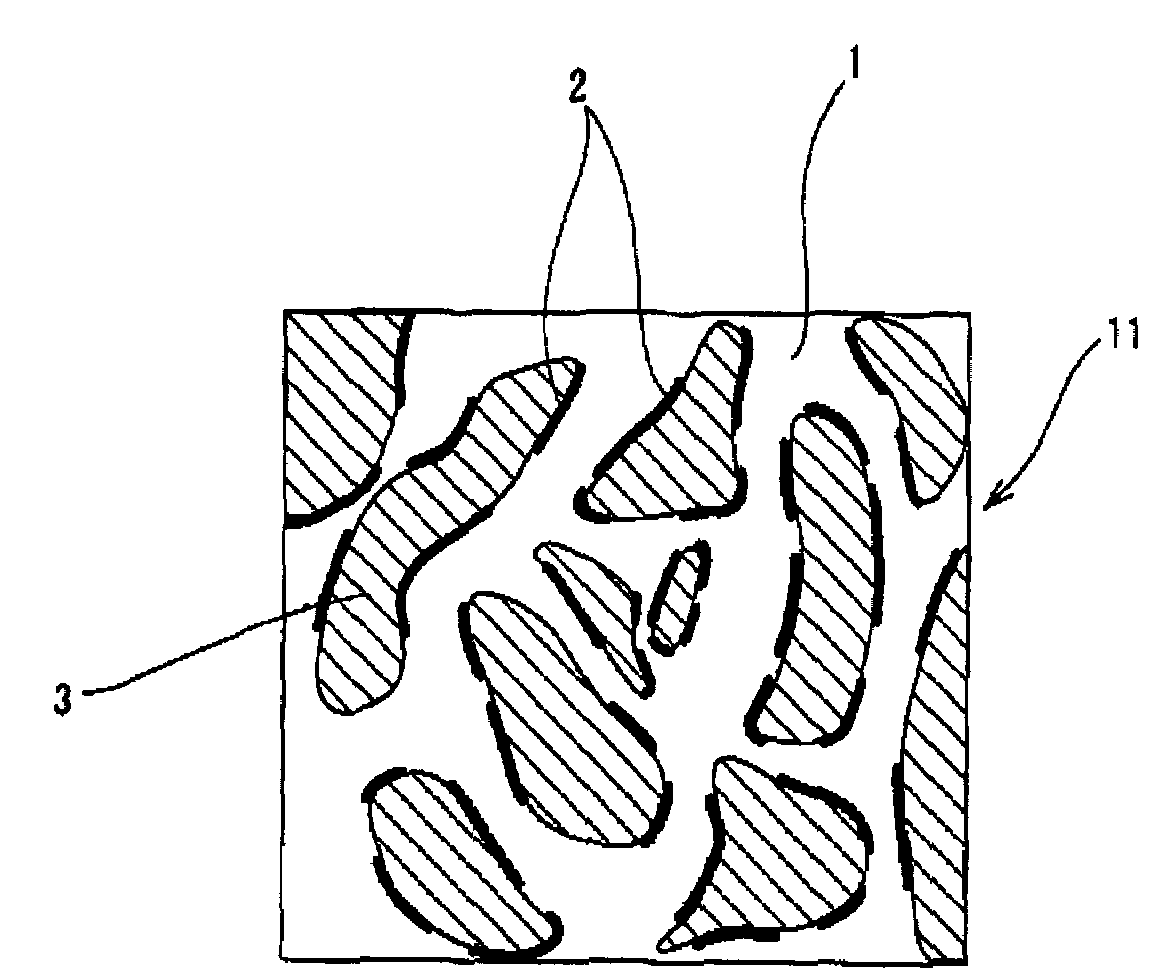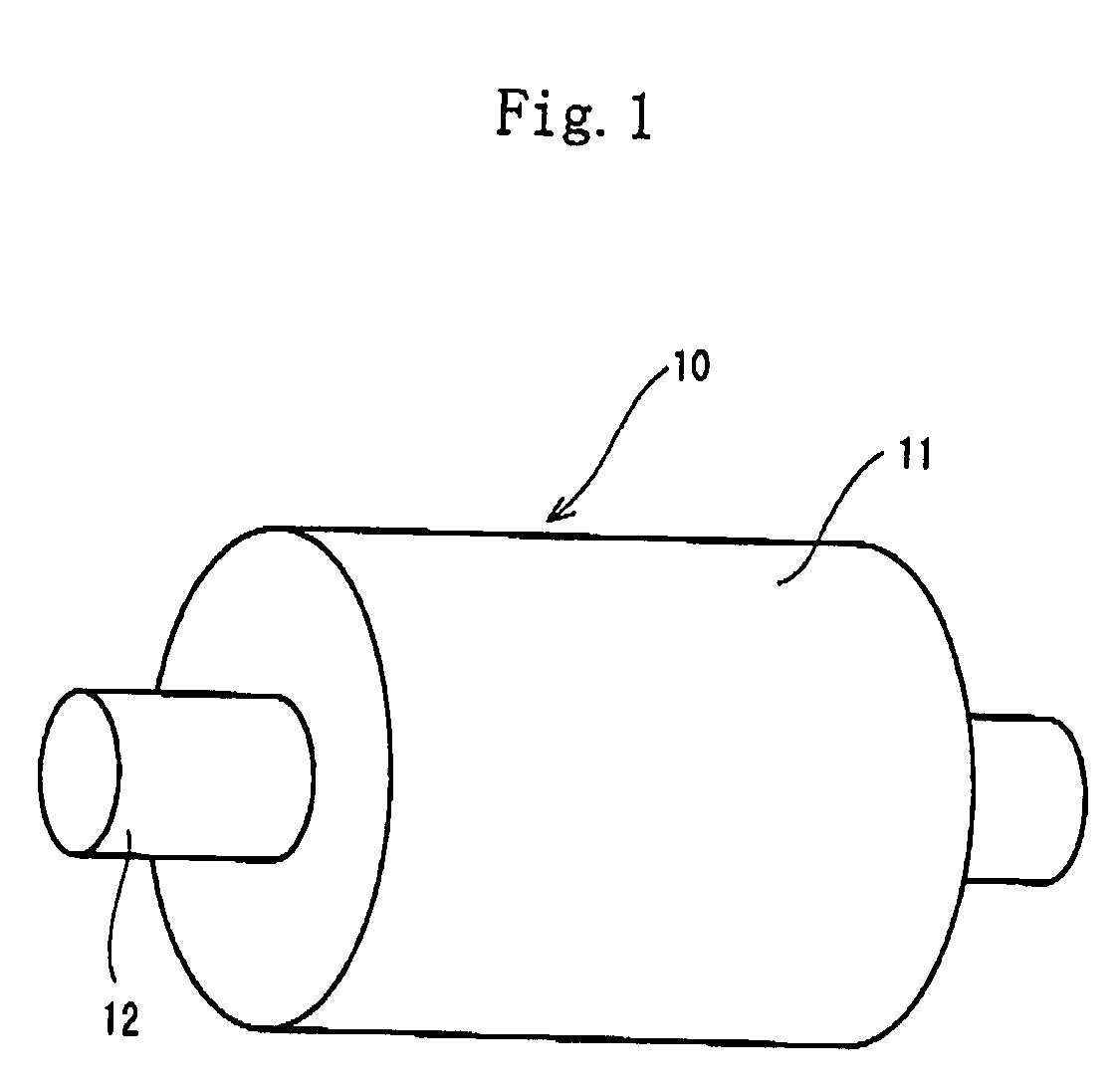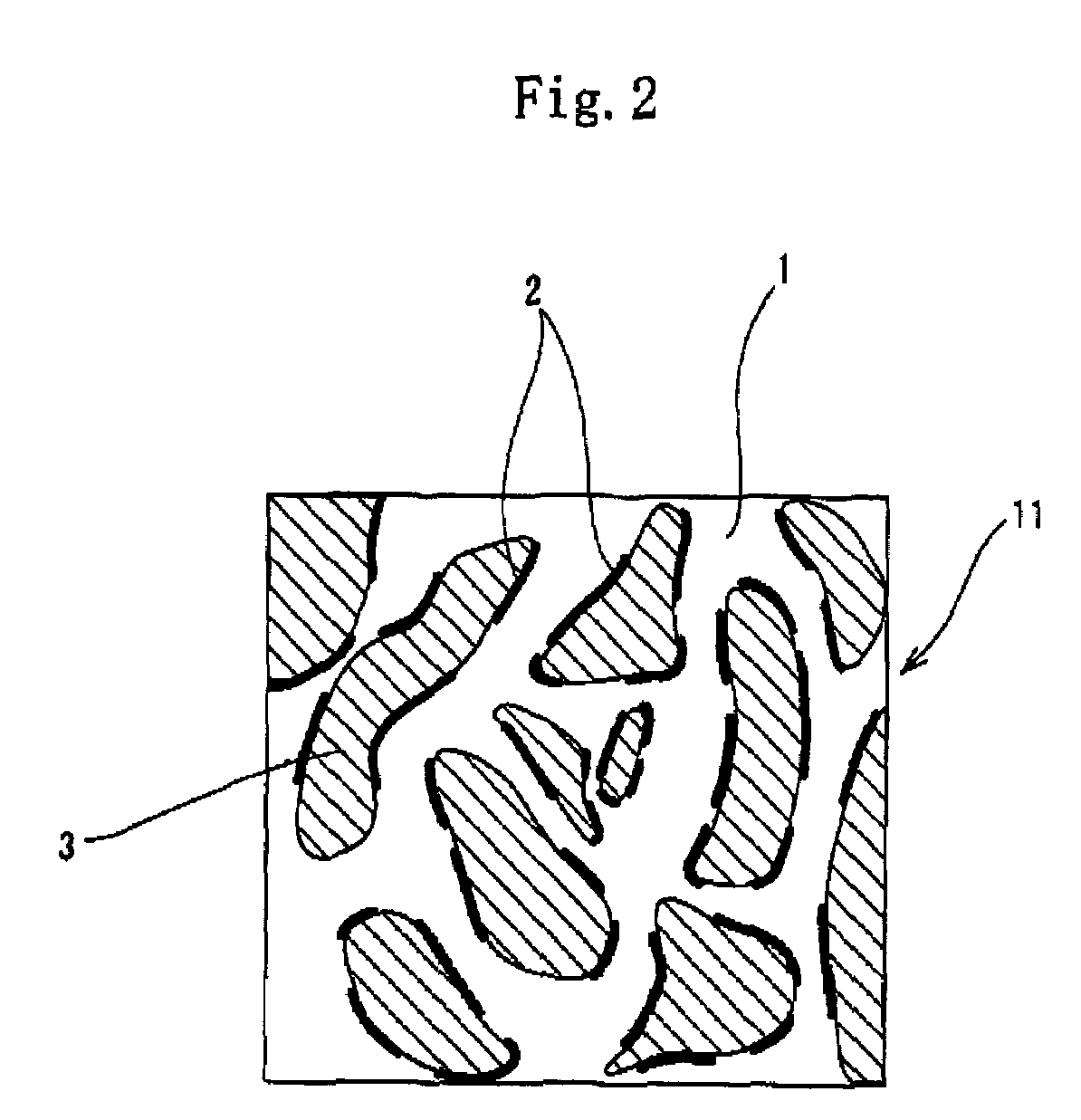Conductive member for image-forming apparatus
- Summary
- Abstract
- Description
- Claims
- Application Information
AI Technical Summary
Benefits of technology
Problems solved by technology
Method used
Image
Examples
examples 1 through 6
[0210]As the polymer composing the uncontinuous phase, the EO-PO-AGE copolymer was used in the examples 1 through 4 and the example 6, and the epichlorohydrin rubber was used in the example 5. The salt 1 consisting of lithium-bis (trifluoromethanesulfonyl) imide or the salt 2 consisting of lithium-tris (trifluoromethanesulfonyl)methide was distributed to the EO-PO-AGE copolymer and the epichlorohydrin rubber. The lithium-bis(trifluoromethanesulfonyl) imide and the lithium-tris (trifluoromethanesulfonyl)methide are the salt capable of dissociating into cations and anions. The low-nitrile NBR was used to form the continuous phase in the examples 1 through 6. In the examples 1 through 4, the EPDM was used to form the other uncontinuous phase (the second uncontinuous phase). Except the conductive roller of the example 2, the conductive rollers of the other examples was formed as rollers having a layer made of cellular material. The salt 2 had an electrical conductivity of 3.6 mS / cm, whe...
example 7
[0211]Epichlorohydrin rubber (50 phr), NBR, calcium carbonate, hydrotalcite-like compound, zinc oxide, and stearic acid were kneaded by an enclosed kneader preheated at 120° C. While they were being kneaded, a master batch of a thiourea type crosslinking agent (vulcanizing agent 2) prepared in advance by mixed with the epichlorohydrin rubber (10 phr), and a vulcanizing accelerator (vulcanizing accelerator 3) for the thiourea crosslinking agent were supplied to the kneader to perform dynamic crosslinking. An operator watched a chart of a kneading torque during the crosslinking operation. When the crosslinking proceeded in the neighborhood of a torque peak, the kneading operation was suspended. The mixture was cooled to 50° C. Then sulfur, a vulcanizing accelerator 1, and a vulcanizing accelerator 2 were supplied to the kneader to perform a kneading operation. As a result, a dynamically crosslinked composition was obtained. The composition was tubularly extruded as in the case of the ...
examples 8 through 11
[0212]The EO-PO-AGE copolymer was used as the polymer composing the uncontinuous phase in the examples 8 through 11. The salts 3 through 6 capable of dissociating into cations and anions were distributed to the EO-PO-AGE copolymer of the examples 8 through 11 respectively. The salt 3 was potassium-bis(trifluoromethanesulfonyl) imide. The salt 4 was hexyltrimethylammonium-bis(trifluoromethanesulfonyl) imide. The salt 5 was 1-ethyl-3-methylimidazolium-bis (trifluoromethanesulfonyl) imide (abbreviated as EMI-TFSI). The salt 6 was 1-ethyl-3-methylimidazolium-tetrafluoroborate (abbreviated as EMI-BF4).
[0213]The other specifications were similar to that of the example 2. The conductive rollers of the examples 8 through 11 were solid (not cellular).
[0214]The salt 4 was a quaternary ammonium salt of trimethyl type (three of R1 through R4 are methyl group) whose cations are shown by the chemical formula 2. The salt 5 was an imidazolium salt in which one of R5 and R6 is a methyl group and the...
PUM
| Property | Measurement | Unit |
|---|---|---|
| Temperature | aaaaa | aaaaa |
| Temperature | aaaaa | aaaaa |
| Temperature | aaaaa | aaaaa |
Abstract
Description
Claims
Application Information
 Login to View More
Login to View More - R&D
- Intellectual Property
- Life Sciences
- Materials
- Tech Scout
- Unparalleled Data Quality
- Higher Quality Content
- 60% Fewer Hallucinations
Browse by: Latest US Patents, China's latest patents, Technical Efficacy Thesaurus, Application Domain, Technology Topic, Popular Technical Reports.
© 2025 PatSnap. All rights reserved.Legal|Privacy policy|Modern Slavery Act Transparency Statement|Sitemap|About US| Contact US: help@patsnap.com



